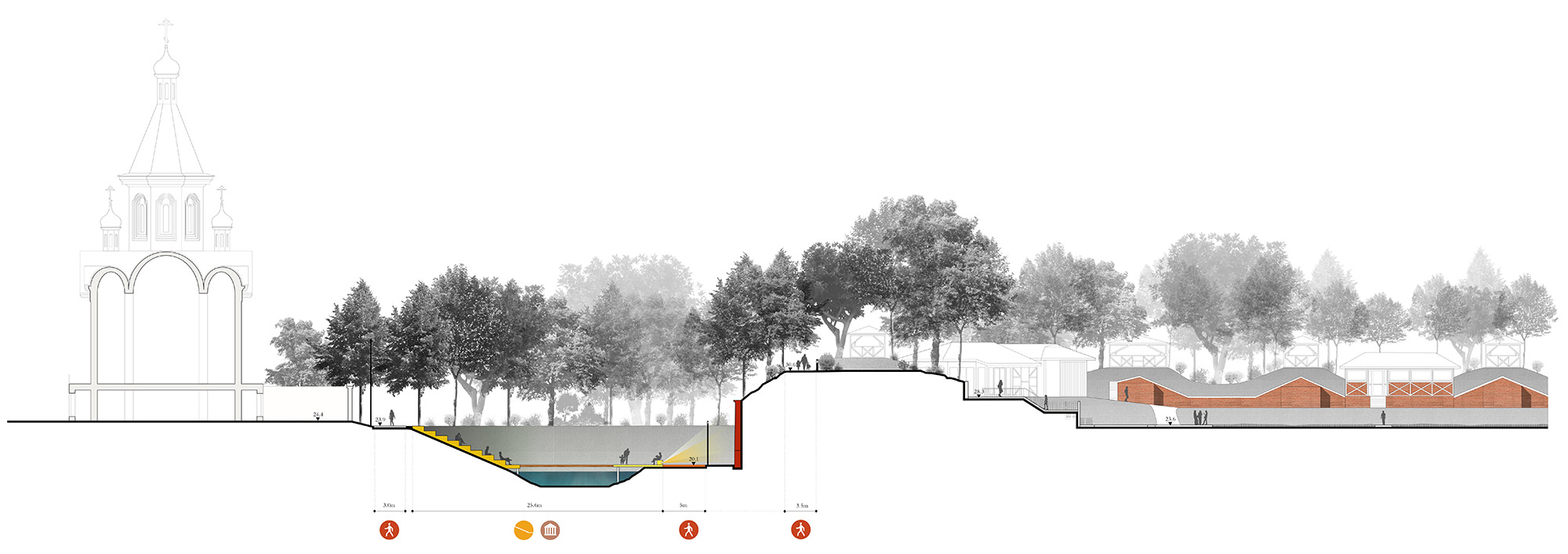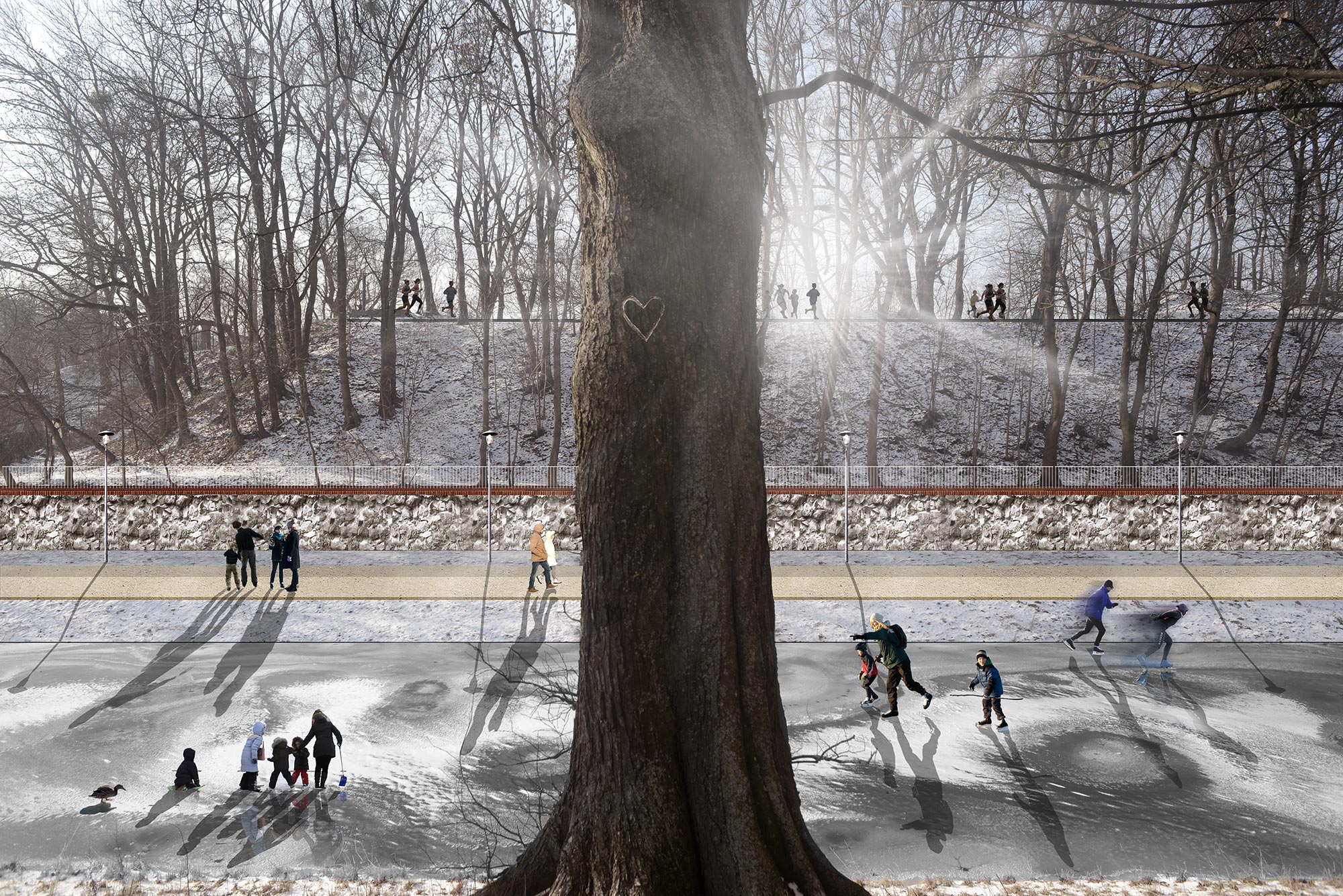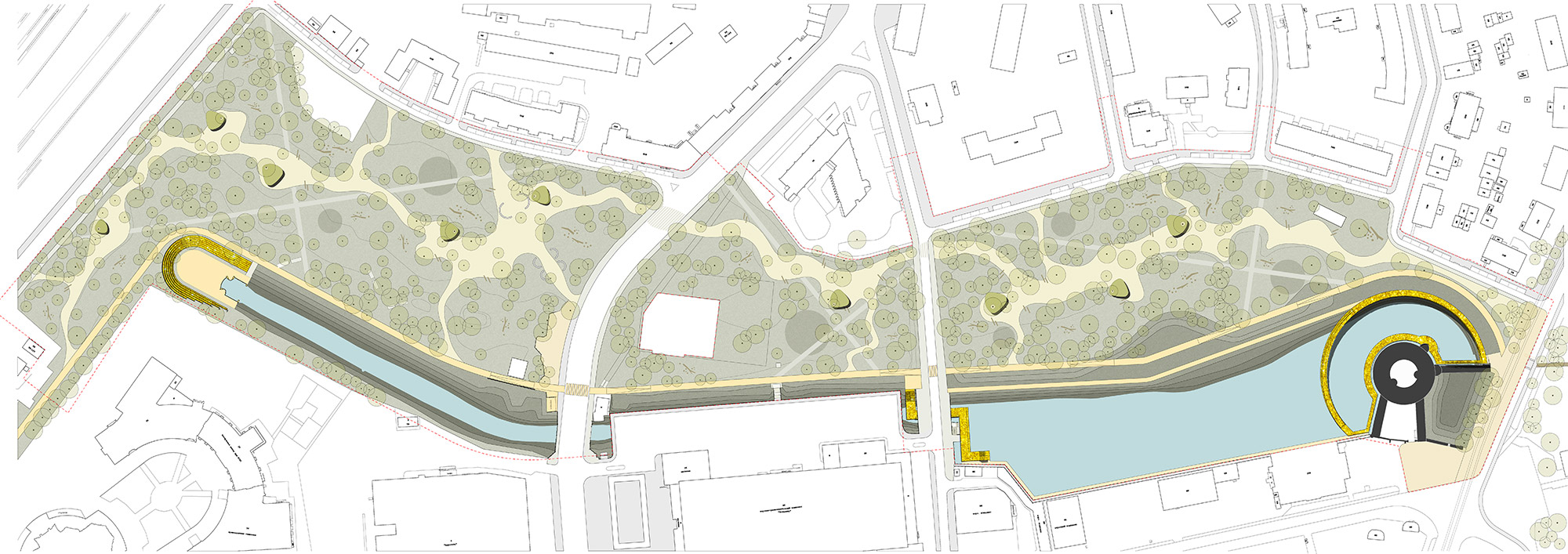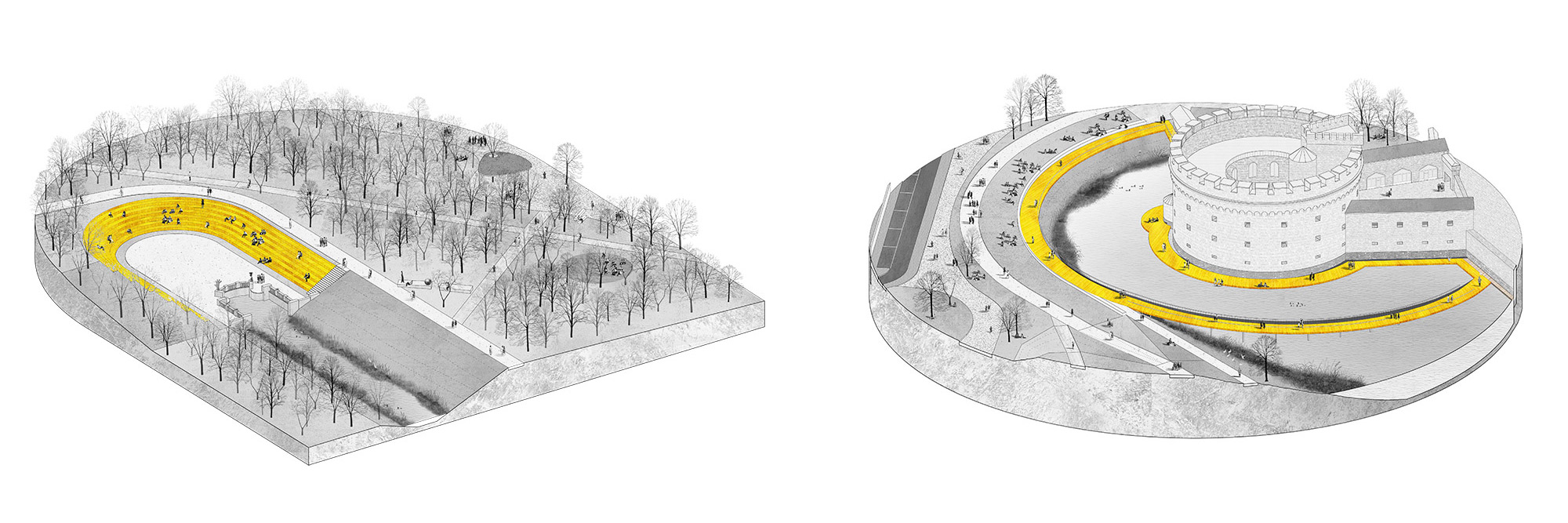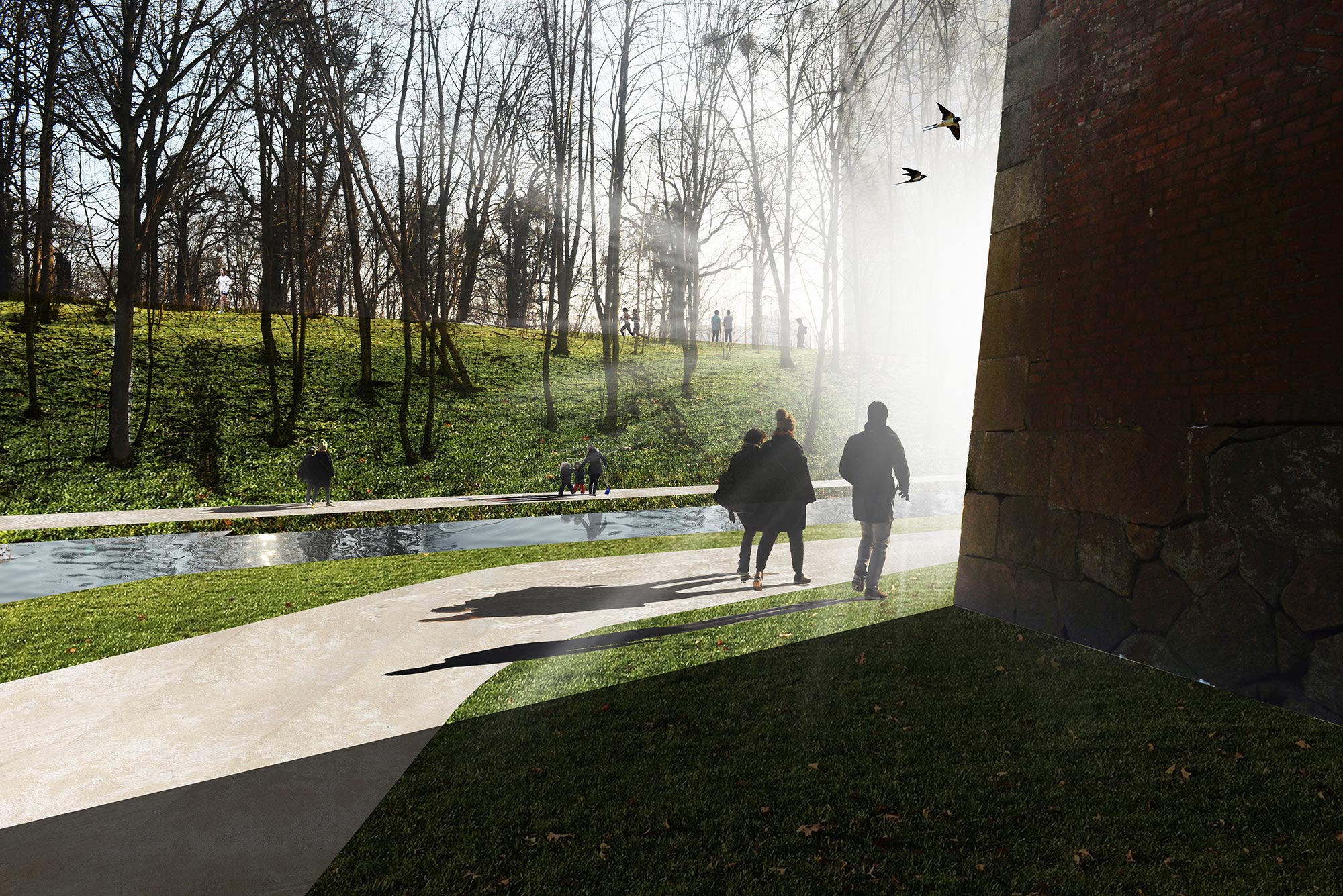Revealing Geometries
Kaliningrad, Russia
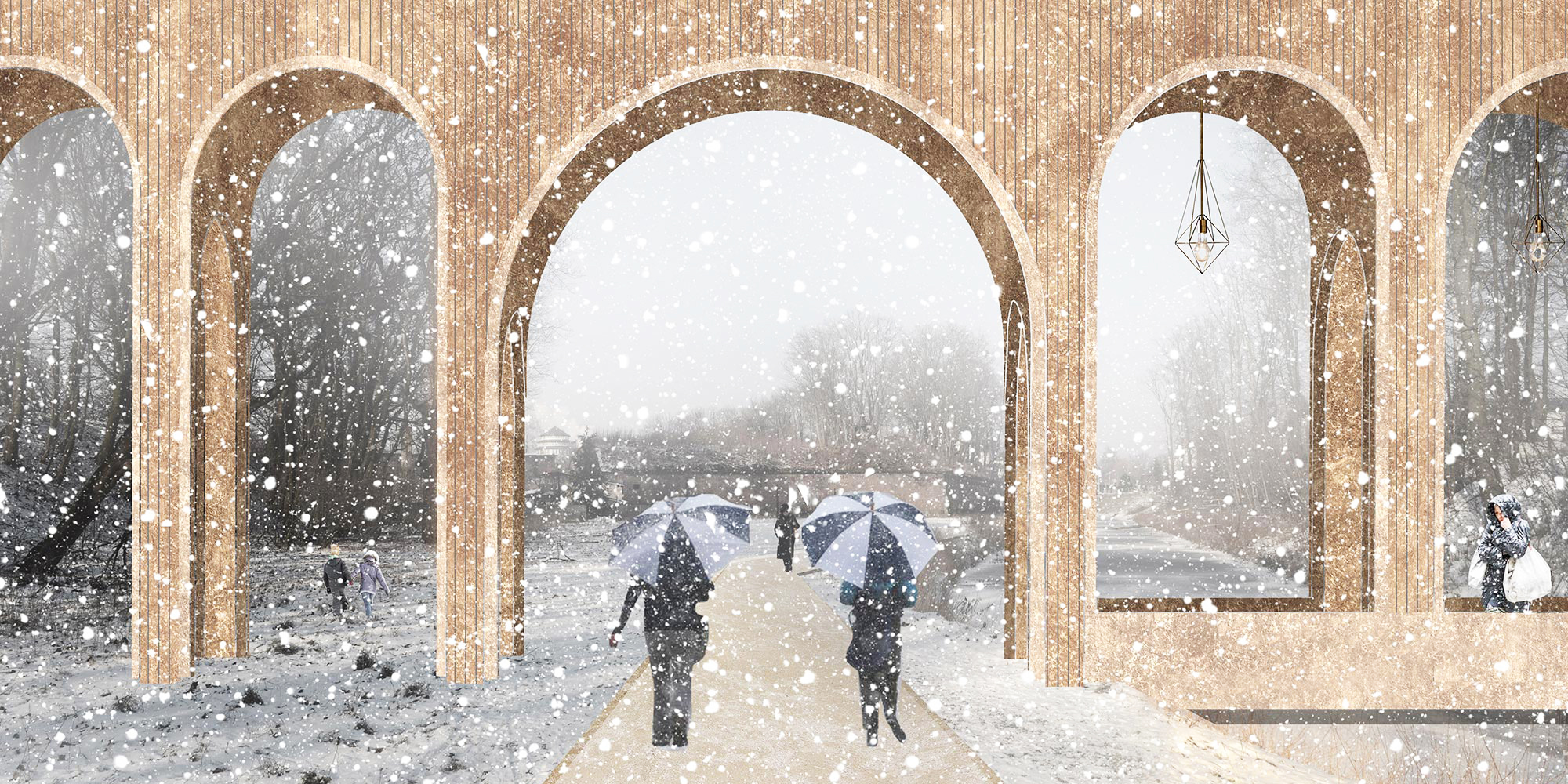
Kaliningrad is a city defined by a long and complex history: the palimpsest of the different trances of the past have been –for the most part- erased by the World War. Nevertheless, the project site is one of the few parts of the city that have survived, and is currently witness the different epochs that the city has gone through; the upper and lower pond of Teutonic’s Knights, the military defense infrastructures of the Prussians and the Soviet public park. Despite its cultural relevance, the park has been left abandoned for decades, and the historical infrastructures have turned into ruins.
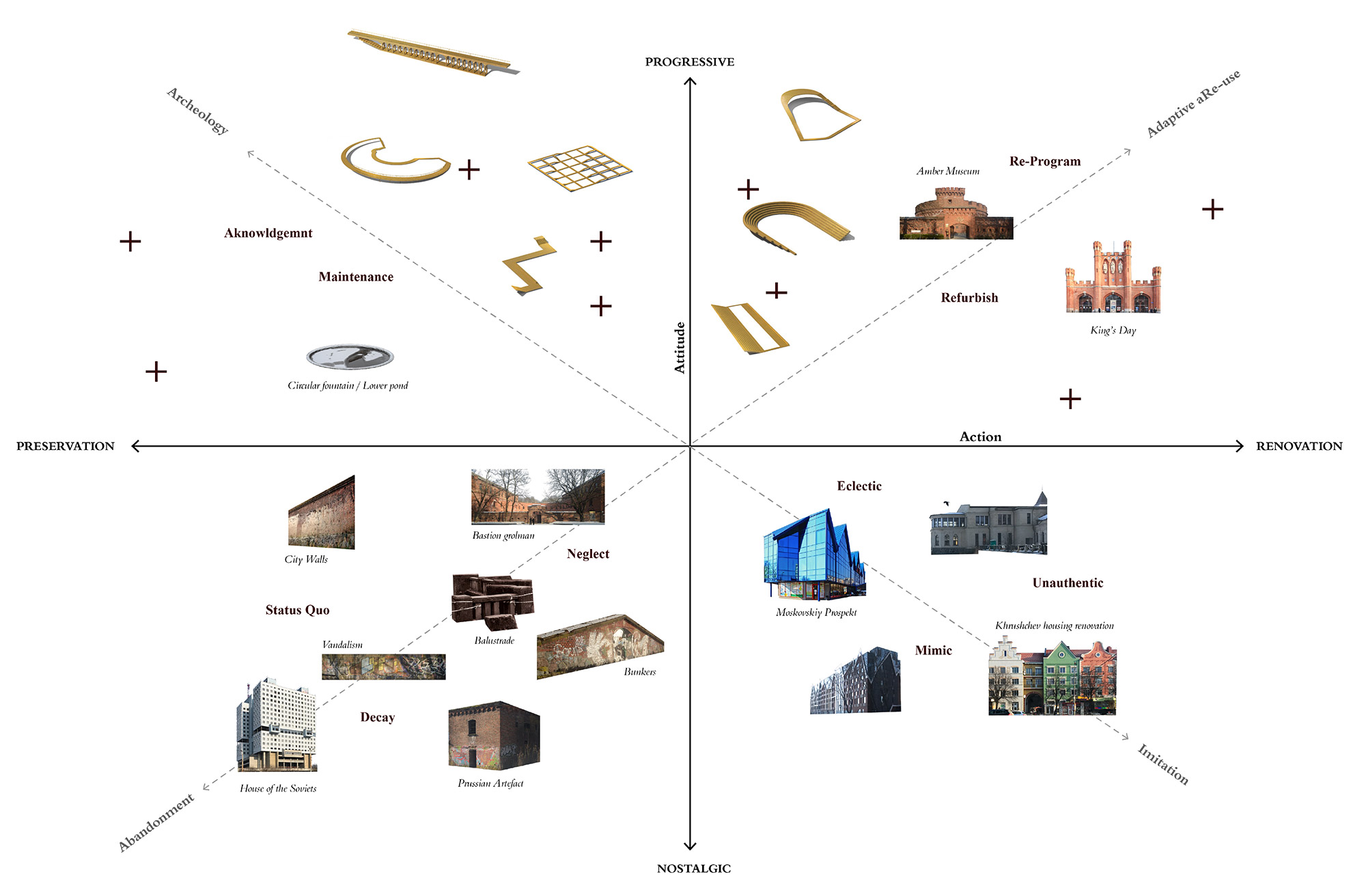
“Revealing Geometries” takes shape physically and conceptually, from the fact that ruins can become –as a radical form of preservation- the matrix for a new identity, and similarly, untamed nature the matrix for a rich natural ecosystem. The recognition of the site as a form of archeological park – gives the opportunity to secure in time and space the traces of the past, transforming them into a new cultural/education infrastructure at public disposal.
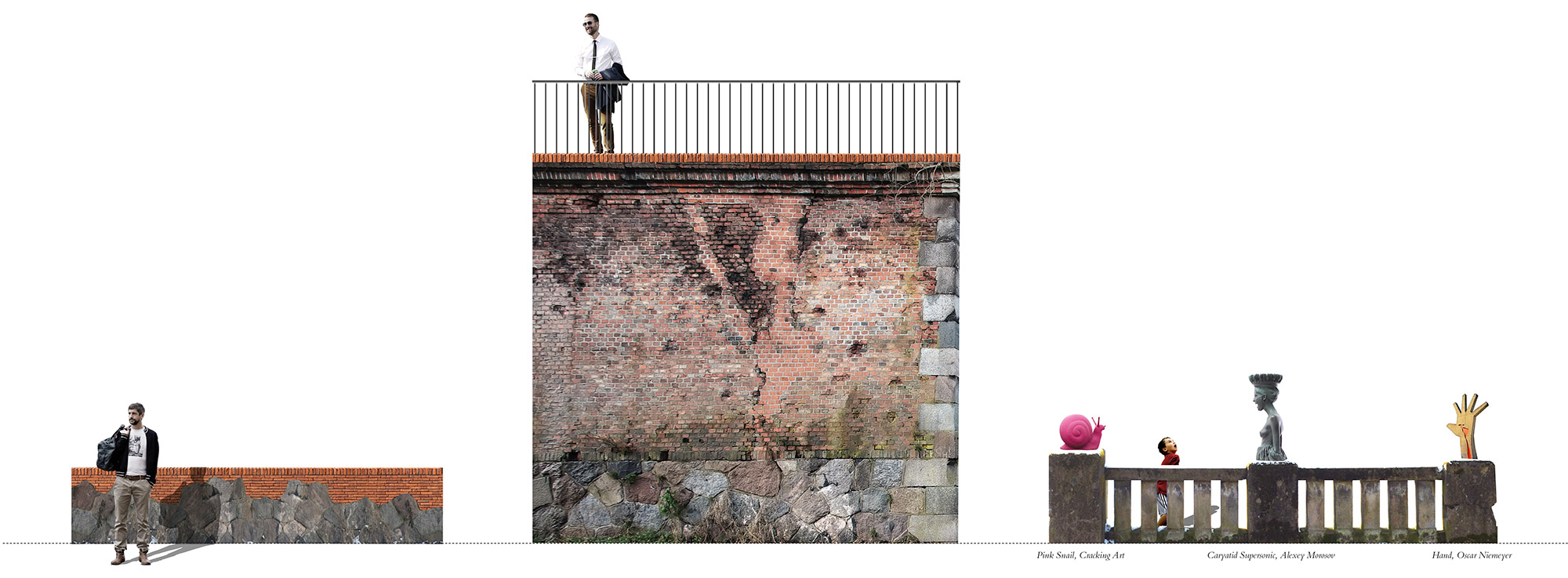
While radical preservation defines the general approach, two design actions are re-defining the park(s): (1) retracing the former path system of the Prussian’s Wallpromeade and (2) defining new geometries that can enhance the rich cultural/environmental context of the area while hosting new programmatic opportunities.

The geometrical spatial definition of the “devices” -responding to the military defense infrastructure and Prussian landscape gardening design language- overlaps with the parks in seven different locations. They are as intensive design interventions centered around the main features of the site (water, ruins, topography, etc.); they are program-less objects that create the conditions for temporary occupation, while permanently highlighting the cultural and environmental diversity of the park, and more broadly, of the ring to-come.
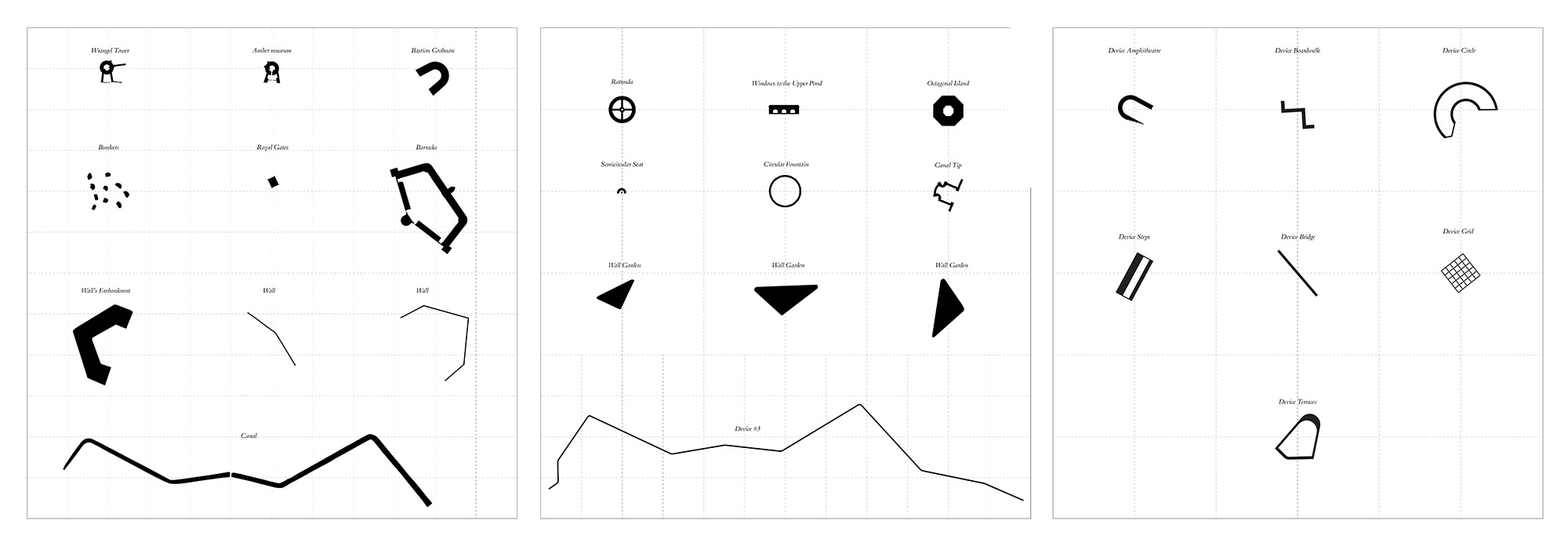
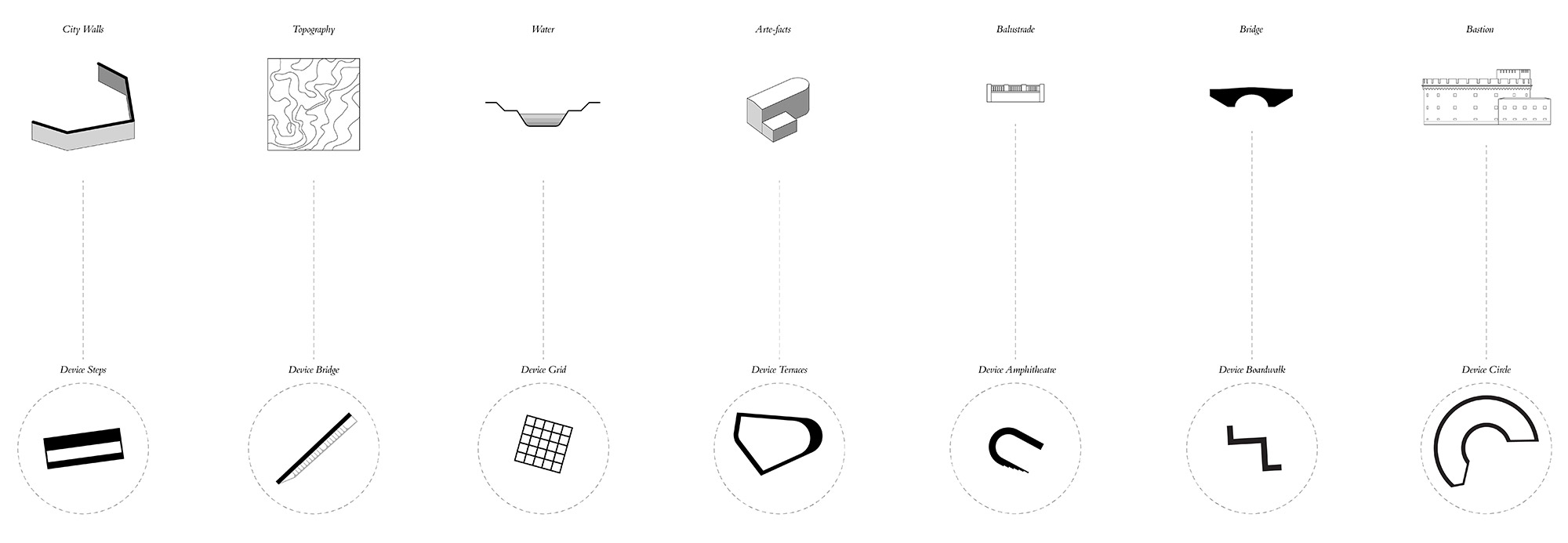
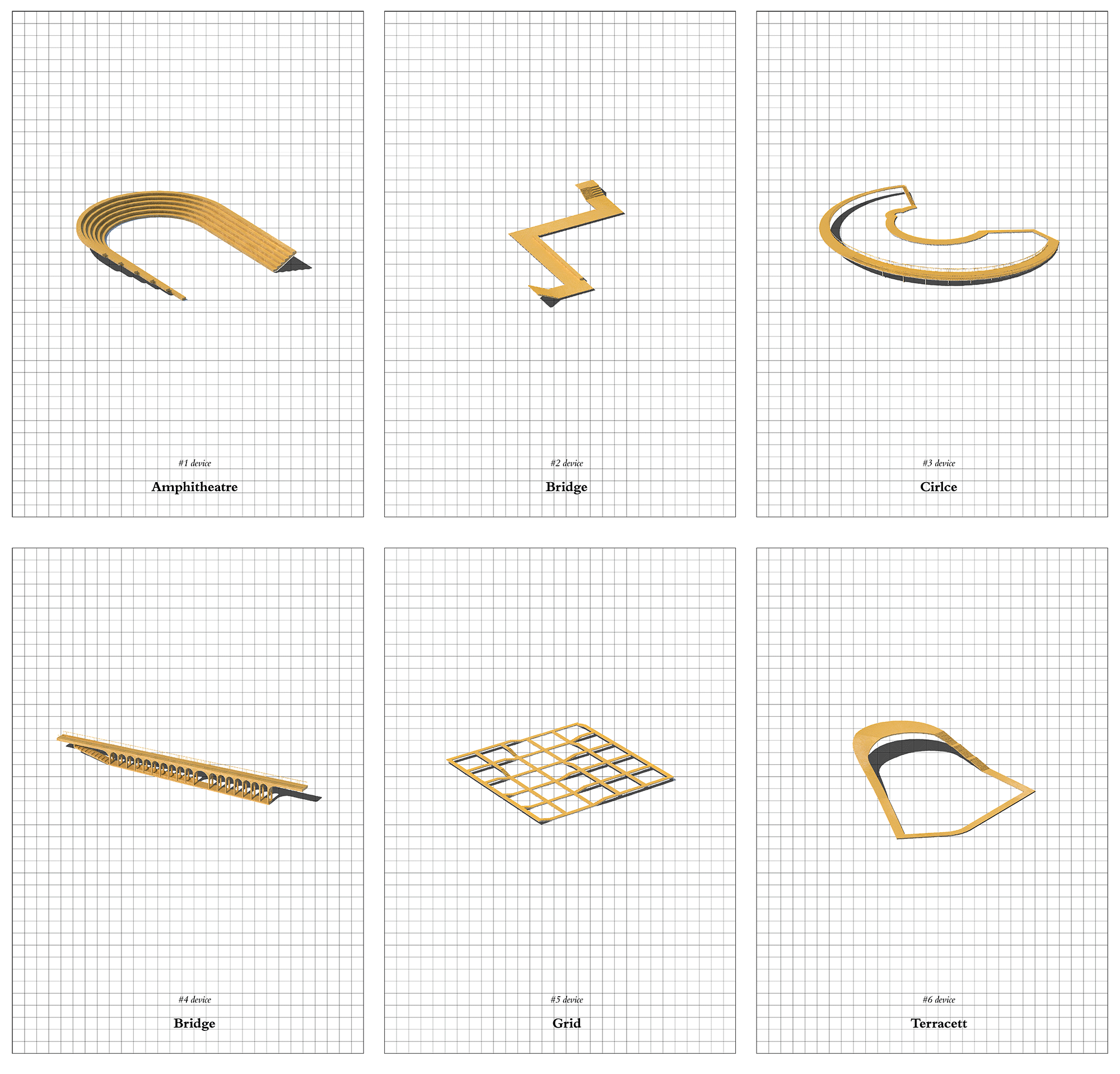
The park is in-fact a system of 2 parks defined by autonomous identities: Kashtanovy Park and Litovsky Park, tight together by a comprehensive strategy. It bears the potential of rethinking the former ring as a whole: a new infrastructure that can host social and ecological interaction, while bringing back the historical layers as evidences to pass-on to future generations.

